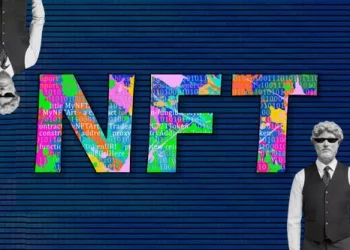In recent years, the emergence of Non-Fungible Tokens (NFTs) has revolutionized the digital asset landscape, sparking unprecedented interest and investment across various industries. These unique digital tokens represent ownership or proof of authenticity of a particular item or piece of content, leveraging blockchain technology to provide immutable proof of ownership. As the NFT market continues to evolve rapidly, understanding its market value dynamics becomes crucial for investors, creators, and enthusiasts alike.
The Rise of Non-Fungible Tokens
The concept of NFTs builds upon the foundation of blockchain technology, specifically Ethereum’s ERC-721 standard, which allows for the creation and trading of unique digital assets. Unlike cryptocurrencies such as Bitcoin or Ethereum, which are fungible and interchangeable, each NFT is distinct and cannot be replicated. This uniqueness is achieved through cryptographic signatures that verify ownership and authenticity, providing creators with a means to monetize digital assets in ways previously unimaginable.
Market Dynamics and Valuation
Determining the market value of NFTs involves a complex interplay of factors, ranging from scarcity and demand to cultural relevance and intellectual property rights. At its core, the value of an NFT is derived from perceived scarcity — the rarer the asset, the higher its potential value. This scarcity can be artificial, created through deliberate limitations on supply, or intrinsic, based on the inherent uniqueness of the digital asset.
Factors Influencing NFT Valuation
- Scarcity and Rarity: The scarcity of an NFT is often a primary driver of its market value. Collectors and investors place a premium on items that are limited in supply, as this scarcity enhances their exclusivity and desirability.
- Demand and Popularity: The demand for NFTs fluctuates based on trends, cultural significance, and the popularity of the underlying content. High-profile auctions and endorsements from celebrities or influencers can significantly boost demand and, consequently, the value of associated NFTs.
- Artistic and Cultural Significance: NFTs encompass a wide range of digital assets, including artworks, music, virtual real estate, and even tweets. The cultural relevance and artistic merit of these assets contribute to their perceived value, with some NFTs transcending mere financial worth to become cultural artifacts.
- Utility and Interoperability: Beyond collectibility, the utility and interoperability of NFTs within virtual worlds, gaming ecosystems, and decentralized finance (DeFi) platforms also influence their valuation. NFTs that offer additional functionalities or integration possibilities can attract a broader audience and higher valuations.
Market Trends and Investment Considerations
The NFT market has witnessed exponential growth since its inception, with notable milestones including multi-million dollar sales of digital artworks and virtual real estate. Understanding current market trends and investment considerations is crucial for stakeholders looking to navigate this dynamic landscape:
- Speculative Nature: Like any emerging market, the NFT space is characterized by speculative investments and volatility. Prices of NFTs can experience rapid fluctuations based on market sentiment, new developments in technology, or regulatory changes.
- Emerging Use Cases: Beyond traditional collectibles, NFTs are increasingly being utilized in areas such as gaming, sports memorabilia, music royalties, and digital identities. Exploring these emerging use cases can uncover new investment opportunities and avenues for growth.
- Legal and Regulatory Frameworks: As the NFT market matures, regulatory scrutiny around intellectual property rights, licensing agreements, and investor protection is intensifying. Compliance with existing regulations and proactive engagement with legal experts is essential for navigating potential legal challenges.
Challenges and Future Outlook
Despite its promising growth trajectory, the NFT market faces several challenges that could impact its long-term sustainability and mainstream adoption:
- Market Saturation: The proliferation of NFT projects and platforms has led to concerns about market saturation and the dilution of value. Quality control and differentiation will be crucial for maintaining investor confidence and sustaining market growth.
- Environmental Concerns: The energy-intensive nature of blockchain transactions, particularly on proof-of-work networks like Ethereum, has raised environmental concerns. Innovations in blockchain scalability and sustainability are needed to address these challenges and mitigate their impact.
- Technological Advancements: Ongoing advancements in blockchain technology, including the transition to proof-of-stake consensus mechanisms and the development of Layer 2 scaling solutions, have the potential to enhance the efficiency and scalability of NFT platforms.
See also: How Non-fungible Tokens (Nfts) Rise
Conclusion
In conclusion, the market value of NFTs is shaped by a combination of scarcity, demand dynamics, cultural significance, and technological innovation. As the ecosystem continues to evolve, stakeholders must remain vigilant to emerging trends, regulatory developments, and technological advancements that could impact the valuation and utility of NFTs. By understanding these factors and staying informed, investors and creators can position themselves to capitalize on opportunities in this rapidly expanding digital frontier.
Related topics:

















